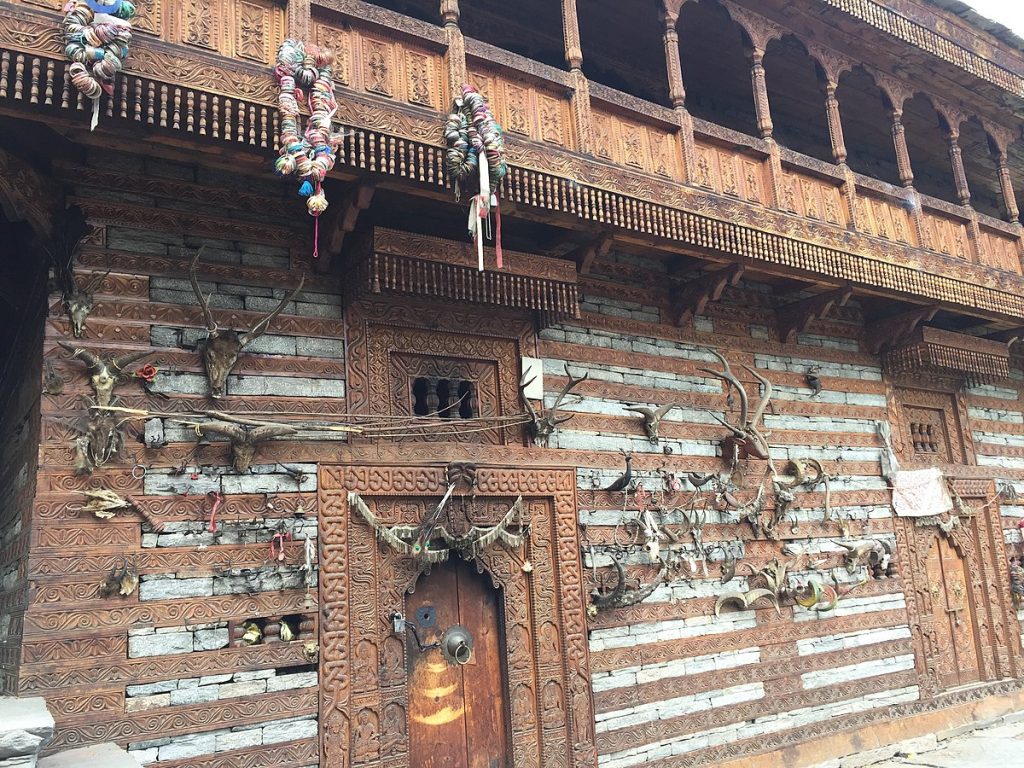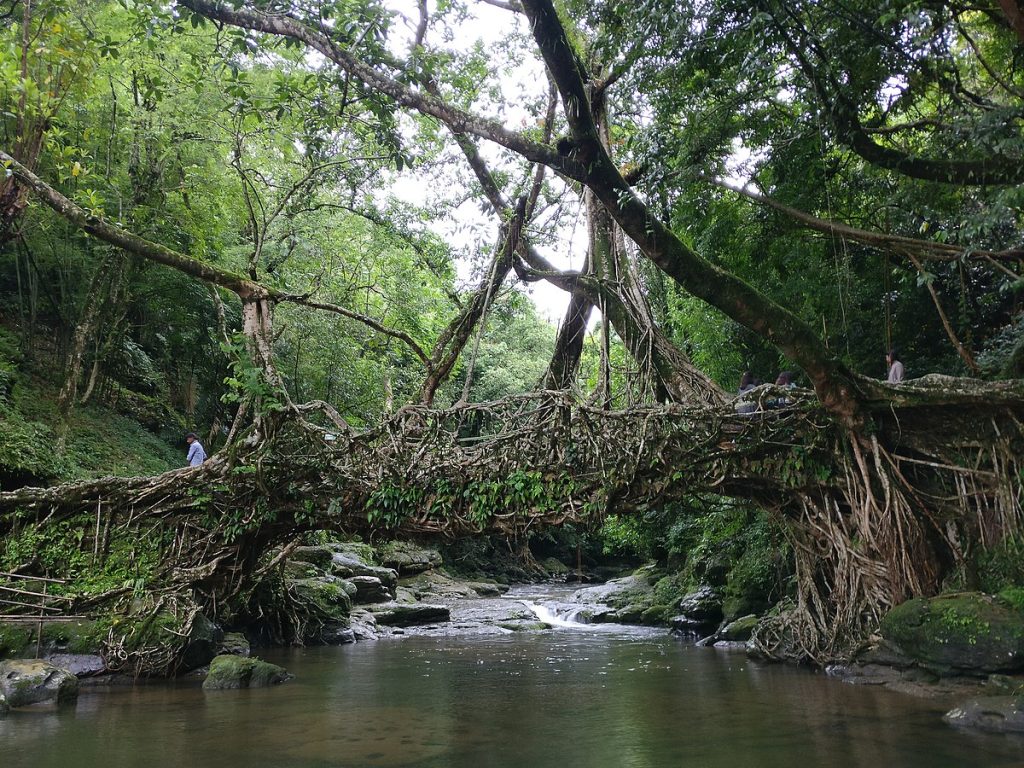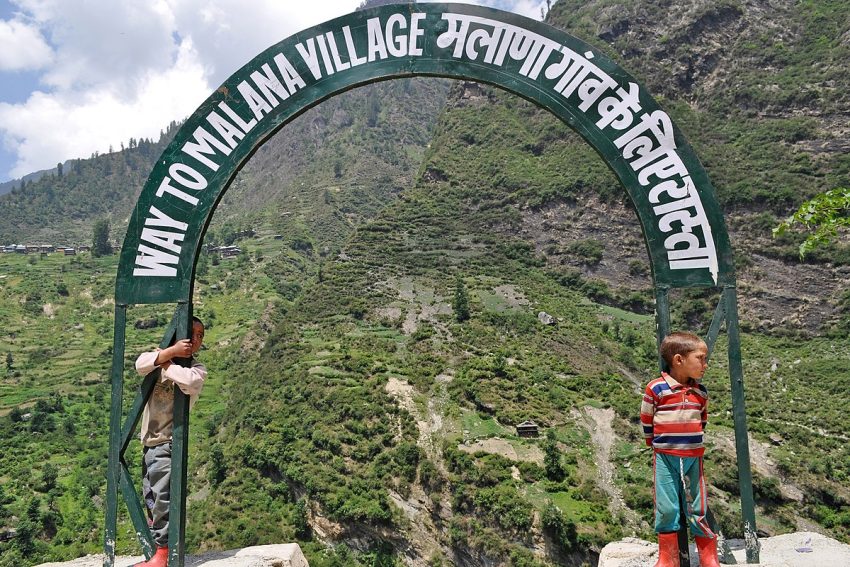India, with its kaleidoscope of cultures, landscapes, and traditions, beckons travelers to explore beyond the well-trodden paths. While iconic destinations like the Taj Mahal and Jaipur’s palaces continue to captivate, there lies a treasure trove of lesser-known villages waiting to be discovered. In this travel blog, we delve into three such hidden gems: Malana Village in Himachal Pradesh, Mawlynnong Village in Meghalaya, and Ziro Village in Arunachal Pradesh.
Malana Village, Himachal Pradesh: Where Time Stands Still

If you are looking for an offbeat travel destination, Malana Village is among one of the hidden gems for you. This secluded village in the Parvati Valley is known for its ancient culture and traditions, which have remained unchanged for centuries. The villagers, who call themselves Malanis, speak a unique language called Kanashi, and claim to be the descendants of Alexander the Great. They worship Jamlu Devta, the village god, whose temple is the main attraction of the village. The village is also famous for its high-quality hashish (charas), which is locally produced and sold as Malana Cream.
How to Reach Malana:
- By Air: The nearest airport is Bhuntar Airport in Kullu, approximately 21 kilometers away. From there, hire a taxi or take a local bus to Jari, the last motorable point.
- By Rail: The closest railway station is Joginder Nagar, about 143 kilometers from Malana. From Joginder Nagar, hire a taxi or take a bus to Jari.
- By Road: Drive from Manali to Jari, and then embark on a scenic trek of about 4-5 hours to reach Malana.
Best Season to Travel:
Visit Malana between April and October when the weather is pleasant, and the village is accessible.
Ideal Stay Time:
Plan for at least 2-3 days to immerse yourself in the village’s unique vibe.
Must-Visit Attractions:
1. Jamlu Devta Temple: Seek blessings at this ancient temple.
Jamlu Devta Temple, nestled amidst the rugged Himalayan terrain, is a spiritual haven for both locals and curious travelers. Dedicated to Jamlu Devta, the village deity, this ancient temple exudes an aura of reverence. As you ascend the stone steps, the air thickens with incense, and the rhythmic chants of priests resonate. The wooden architecture, adorned with intricate carvings, transports you to a bygone era. Seek blessings, light a diya (oil lamp), and immerse yourself in the spiritual energy that permeates every corner of this sacred abode.
2. Chandrakhani Pass Trek: Explore the stunning landscapes on this trek.
The Chandrakhani Pass Trek is a gateway to nature’s grandeur. Lace up your hiking boots and embark on a journey that traverses dense forests, alpine meadows, and snow-clad peaks. The trail winds through rhododendron groves, revealing panoramic vistas of the Parvati Valley and the distant Chandrakhani Pass. As you ascend, the air grows crisper, and the silence envelops you. Keep an eye out for elusive Himalayan wildlife—perhaps a glimpse of the elusive snow leopard or the majestic Himalayan monal. Each step brings you closer to the sky, and the sense of accomplishment at the pass is unparalleled.
3. Malana Cream: Taste the famous local hashish (charas) known as Malana Cream.
Malana Cream, whispered about in hushed tones, is more than just a substance; it’s a legend. Derived from the cannabis plant, this potent hashish (charas) has put Malana on the global map. The Malanis guard their secret cultivation techniques, believing that their cannabis strain is a gift from the gods. If you’re curious, tread carefully. Seek out a local guide who can introduce you to the rituals and traditions associated with Malana Cream. Remember, it’s not just about the high; it’s about understanding the cultural context and respecting the village’s way of life.
Costing:
- Accommodation: Budget guesthouses and homestays are available.
- Food: Local Himachali cuisine is affordable and delicious.
Mawlynnong Village, Meghalaya
Asia’s Cleanest Village

Tucked away in the East Khasi Hills, Mawlynnong, one of the many hidden gems has earned its reputation as Asia’s Cleanest Village. The villagers take immense pride in maintaining cleanliness, and the entire village is adorned with vibrant flowers and bamboo dustbins. Don’t miss the living root bridges, where ancient banyan tree roots have been meticulously woven to create natural walkways.
How to Reach Mawlynnong:
- By Air: Fly to Guwahati Airport, which is around 172 kilometers away. From Guwahati, hire a taxi or take a bus to Mawlynnong.
- By Rail: The nearest railway station is Guwahati Railway Station.
- By Road: Drive from Shillong to Mawlynnong (about 90 kilometers).
Best Season to Travel:
Visit Mawlynnong during the monsoon season (June to September) when the village is lush green and the waterfalls are in full flow.
Ideal Stay Time:
Stay for 2-3 days to explore the village and nearby attractions.
Must-Visit Attractions:
1. Living Root Bridges: Witness the marvel of bioengineering
In Mawlynnong, nature and human ingenuity converge to create something truly extraordinary: living root bridges. These bridges are not built with bricks or steel but are meticulously crafted by the Khasi and Jaintia tribes using the roots of ancient Ficus elastica trees. Over decades, these roots grow and intertwine, forming sturdy natural bridges that span across streams and ravines. The most famous living root bridge in Mawlynnong is the Umshiang Double-Decker Root Bridge, a stunning example of sustainable architecture. As you walk across these living bridges, you cannot stop admiring one of the hidden gems of Mawlynnong, and witness the harmony between humans and nature.
2. Balancing Rock: A large boulder seemingly defying gravity
Imagine a massive boulder perched precariously on the edge of a cliff, seemingly defying the laws of physics. Welcome to the Balancing Rock of Mawlynnong! This geological wonder stands as a testament to the forces that shaped the landscape over millions of years. As you gaze at this colossal rock, you’ll wonder how it maintains its delicate balance. Is it the result of ancient seismic activity, erosion, or perhaps a touch of magic? Whatever the explanation, the Balancing Rock is a sight to behold and a perfect spot for contemplation.
3. Sky Viewpoint: Enjoy panoramic views of Bangladesh:
For breathtaking hidden gems that stretch beyond borders, head to the Sky View Point in Mawlynnong. Perched atop a hill, this viewpoint offers panoramic views of the lush greenery of Meghalaya and extends all the way to neighboring Bangladesh. As the sun rises or sets, the landscape transforms, casting golden hues over the rolling hills, dense forests, and distant villages. It’s a photographer’s paradise and a place to soak in the serenity of the Eastern Himalayas. Don’t forget your camera; you’ll want to capture this awe-inspiring panorama.
Costing:
- Accommodation: Homestays and guesthouses offer comfortable stays.
- Food: Savor local Khasi cuisine at reasonable prices.
Ziro Village, Arunachal Pradesh
A Tapestry of Apatani Culture

Ziro, home to the Apatani tribe, is a symphony of ancient traditions and natural beauty. The village is famous for its Ziro Music Festival, where indie artists from across the globe gather to celebrate music, art, and camaraderie.
How to Reach Ziro:
- By Air: The nearest airport is Lilabari Airport in Assam (around 120 kilometers away). From Lilabari, hire a taxi or take a shared cab to Ziro.
- By Rail: The closest railway station is North Lakhimpur, approximately 100 kilometers from Ziro. From there, proceed by road.
- By Road: Drive from Itanagar (the capital of Arunachal Pradesh) to Ziro. The scenic journey takes about 5-6 hours.
Best Season to Travel:
- Visit Ziro during the monsoon season (June to September) when the valley is lush green, and the rice fields are a vibrant shade of emerald.
Ideal Stay Time:
- Plan for at least 3-4 days to explore the village, attend the music festival, and soak in the tranquility.
Must-Visit Attractions:
1. Apatani Culture
The Apatani people are known for their distinctive facial tattoos and nose plugs, which were once a mark of beauty and identity. Today, these practices have been discontinued, but the Apatani culture remains vibrant and rich. You can witness their colorful festivals, such as Myoko (in March) and Dree (in July), where they perform rituals, dances, and songs to honor their ancestors and nature. You can also learn about their ingenious farming techniques, where they cultivate rice and fish in the same fields.
2. Ziro Music Festival
If you love music, you can’t miss the Ziro Music Festival, held every year in September. This four-day extravaganza showcases the best of indie music from India and abroad, along with local folk music and art. The festival is set amidst the picturesque Ziro Valley, surrounded by pine forests and paddy fields. You can camp under the stars, mingle with fellow music lovers, and enjoy the eclectic vibes of the festival.
3. Ziro Valley
Ziro Valley is a natural wonder that will leave you spellbound. The valley is dotted with bamboo huts, lush greenery, and scenic views. You can hike to the nearby hills, such as Kile Pakho and Dolo Mando, and enjoy the panoramic vistas of the valley. You can also visit the Talley Valley Wildlife Sanctuary, where you can spot rare and endangered species, such as the clouded leopard, red panda, and hoolock gibbon.
3. Meghna Cave Temple:
A short trek from Ziro leads to the Meghna Cave Temple, dedicated to Lord Shiva. The cave is adorned with ancient rock carvings and offers breathtaking views of the valley. This is among many hidden gems of Ziro village.
Costing:
- Accommodation: Opt for cozy homestays or guesthouses.
- Food: Savor local Apatani cuisine, including thukpa and bamboo shoot delicacies.
Remember, Ziro isn’t just a destination; it’s an invitation to unravel the threads of a captivating culture and connect with the soul of Arunachal Pradesh.
